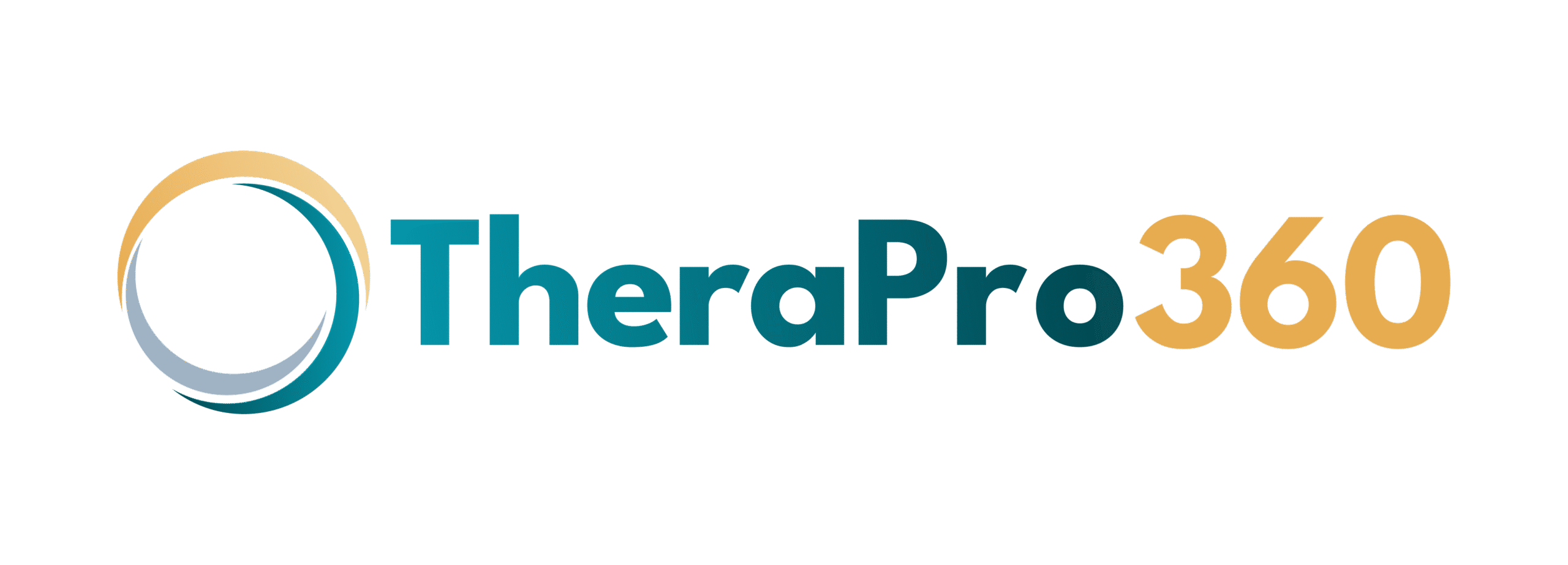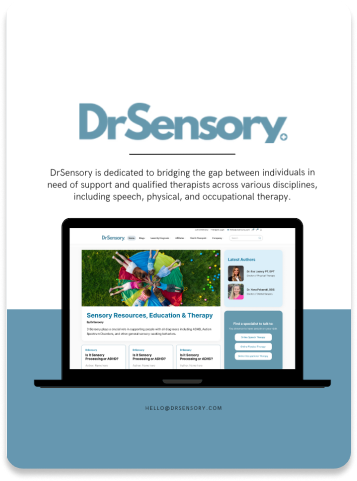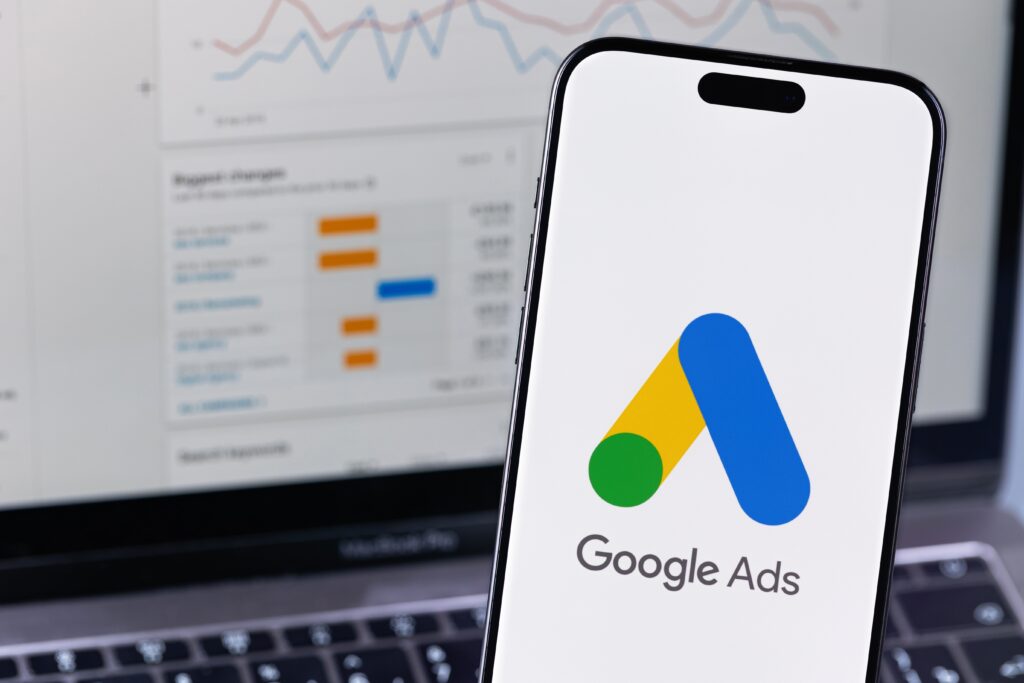
Blog
How to Optimize Your Therapy Website for Google’s AI Overviews & Local Search in 2025
Expert web designers ensure the site and software is easy to use.How to Optimize Your Therapy Website for Google’s AI Overviews & Local Search in 2025
The search landscape is changing faster than ever. Google’s AI Overviews now appear in 15% of all searches, fundamentally altering how potential clients discover therapy services. Traditional SEO tactics that worked last year may be losing effectiveness as artificial intelligence reshapes search results.
For therapists, this shift presents both challenges and opportunities. While AI-powered search might seem intimidating, it offers unprecedented chances to connect with clients seeking your specific expertise. The key lies in understanding how these systems work and optimizing your website accordingly.
In this comprehensive guide, you’ll discover how to position your therapy practice for success in the age of AI search. We’ll explore proven strategies for Answer Engine Optimization (AEO), local search dominance, and conversion-focused content that works with both human readers and artificial intelligence algorithms.

What Are AI Overviews (AEO) and How They Impact Therapists
Google’s AI Overviews represent a fundamental shift from traditional search results to conversational, AI-generated responses. Instead of showing ten blue links, Google now provides direct answers synthesized from multiple sources, often appearing above all other results.
For therapy-related searches, this means potential clients might receive comprehensive answers about mental health conditions, treatment options, or local services without ever clicking through to individual websites. While this creates new challenges, it also opens doors for therapists who optimize their content strategically.
AI Overviews appear most frequently for question-based searches—exactly the type of queries your potential clients use. When someone searches “What is EMDR therapy?” or “How to find a trauma therapist,” they’re seeking immediate, authoritative answers that AI systems can extract from well-optimized websites.
The impact on therapy practices is significant. Websites that appear in AI Overviews receive massive visibility boosts, often generating more traffic than traditional top rankings. However, sites that fail to optimize for AI-driven search may become increasingly invisible as these features expand.
Understanding AEO requires shifting from keyword-focused optimization to answer-focused content creation. Success comes from providing comprehensive, accurate information that AI systems can easily extract and present to users.
7 Signs Your Therapy Website Needs a Redesign to Attract More Clients
How Google’s AI Picks Featured Content from Therapy Sites
Google’s AI systems evaluate content based on several key factors when selecting information for overviews. Understanding these criteria helps therapists create content that’s more likely to be featured prominently in search results.
Authority and Expertise: AI systems prioritize content from recognized authorities in healthcare. For therapists, this means prominently displaying credentials, licenses, and professional experience throughout your website.
Content Comprehensiveness: Google favors detailed, thorough explanations over brief descriptions. A paragraph about anxiety therapy won’t compete with a comprehensive guide covering symptoms, treatment approaches, and expected outcomes.
Structural Clarity: AI systems prefer well-organized content with clear headings, bullet points, and logical flow. Use proper HTML structure to help algorithms understand your content hierarchy.
Freshness and Accuracy: Recently updated content receives preference, especially for healthcare topics where accuracy is crucial. Regular content updates signal relevance and reliability to AI systems.
Source Credibility: Citations, references to professional organizations, and links to authoritative sources boost content credibility in AI evaluations.
Why Your Therapy Website Isn’t Ranking—and How to Fix It with Local SEO & AEO
Optimizing for AI-Powered Answer Boxes & Search Generative Experiences
Search Generative Experiences (SGE) and answer boxes represent the future of search results. These features provide immediate answers to user queries, often incorporating information from multiple sources into comprehensive responses.
For therapy websites, optimization requires creating content that directly addresses common questions while providing context and depth that AI systems value. This approach differs significantly from traditional keyword optimization tactics.
Answer-First Content Strategy: Structure your content to answer questions immediately and clearly. Start with the direct answer, then provide supporting details and context.
Question-Based Headers: Use actual questions as H2 and H3 headers throughout your content. Questions like “What happens in your first therapy session?” or “How long does anxiety treatment take?” align with search queries.
Comprehensive Coverage: AI systems prefer content that covers topics thoroughly from multiple angles. Instead of separate pages for each anxiety disorder, create comprehensive resources covering the full spectrum.
Natural Language Optimization: Write in conversational, natural language that mirrors how people actually speak and search. Voice search and AI queries tend to be more conversational than typed searches.
Examples of AI Overview Listings for Therapy-Related Queries
Understanding successful AI Overview implementations helps therapists model effective optimization strategies. Here are common query patterns and how optimized content appears:
Query: “What should I expect in my first therapy session?”
AI Overview typically includes: Session duration, common discussion topics, intake process, confidentiality explanation, and next steps. Successful content provides all these elements in scannable format.
Query: “EMDR therapy near me”
AI Overview combines: EMDR definition, conditions treated, local provider information, typical session structure, and effectiveness data. Local businesses with comprehensive EMDR content often appear prominently.
Query: “How much does couples therapy cost?”
AI Overview features: Average cost ranges, insurance coverage information, factors affecting pricing, and local market variations. Therapy practices that transparently discuss pricing often get featured.
Comparing Traditional SEO vs AEO for Therapy Clinics
Traditional SEO focused primarily on ranking for specific keywords, while AEO emphasizes providing comprehensive answers that AI systems can extract and present. This shift requires fundamental changes to content strategy and optimization approaches.
Traditional SEO Approach:
- Target specific keywords like “anxiety therapist”
- Create separate pages for each service
- Focus on keyword density and placement
- Optimize for human readers primarily
AEO Approach:
- Answer comprehensive questions about anxiety treatment
- Create topic clusters covering all related aspects
- Focus on natural language and user intent
- Optimize for both human readers and AI extraction
The most successful therapy websites now employ hybrid strategies that satisfy both traditional ranking factors and AI optimization requirements.

Local Search in 2025: What Therapists Need to Know
Local search continues evolving rapidly, with AI systems playing increasingly important roles in determining which therapy practices appear for location-based queries. Understanding these changes helps therapists maintain and improve their local visibility.
AI-Enhanced Local Results: Google’s AI now synthesizes information from multiple sources to provide comprehensive local business information, including services offered, specialties, availability, and client reviews.
Conversational Local Queries: Voice search and AI assistants encourage more conversational local searches like “Find me a trauma therapist who accepts Blue Cross insurance” instead of simple “therapist near me” searches.
Multi-Location Considerations: Practices serving multiple areas need sophisticated location strategies that help AI systems understand service areas without creating confusion or duplicate content issues.
Optimizing for ``Therapist Near Me`` + AI Results
“Therapist near me” searches often trigger AI Overviews that combine general therapy information with local provider details. Optimizing for these hybrid results requires balancing educational content with local business optimization.
Local Business Information: Ensure your Google Business Profile contains comprehensive, accurate information including services, specialties, hours, and contact details. AI systems pull heavily from this data.
Location-Specific Content: Create detailed pages for each location you serve, including neighborhood-specific information, local landmarks, and community connections.
Service Area Clarity: Clearly define your service areas using structured data and natural language throughout your website. AI systems need unambiguous location signals.
Integration with Educational Content: Combine local business information with educational content about therapy services. AI Overviews often merge these elements in response to local queries.
Best Keywords for Physical Therapy SEO (With Examples)
Content Marketing Ideas for Physical Therapists
Social Media Marketing for Physical Therapists: A Strategic Guide
Local SEO Checklist for 2025
Use this comprehensive checklist to ensure your therapy practice maximizes local search visibility in the AI-driven landscape:
Google Business Profile Optimization:
- Complete all profile sections with accurate information
- Add high-quality photos of your practice and team
- Encourage and respond to client reviews consistently
- Post regular updates about services and availability
- Use Google Posts to highlight specialties and expertise
Local Content Strategy:
- Create location-specific service pages for each area served
- Include local landmarks and community references
- Develop content addressing local mental health resources
- Feature local partnerships and professional connections
Technical Local SEO:
- Implement LocalBusiness schema markup
- Ensure consistent NAP (Name, Address, Phone) across platforms
- Create location-specific landing pages with unique content
- Optimize for mobile users who frequently search locally
Citation Building:
- List your practice in relevant healthcare directories
- Maintain consistent information across all platforms
- Focus on quality citations from authoritative sources
- Monitor and manage online reputation actively

Adding Schema Markup to Therapy Websites for AEO
Schema markup provides structured data that helps AI systems understand your content more effectively. For therapy websites, proper schema implementation can significantly improve visibility in AI-powered search features.
Structured Data Types for Healthcare: FAQ, LocalBusiness, MedicalSpecialty
Different schema types serve specific purposes for therapy practices. Understanding when and how to implement each type maximizes your AEO potential.
FAQ Schema: Perfect for therapy websites because many searches are question-based. Implement FAQ schema for common questions about therapy processes, conditions treated, and administrative details.
LocalBusiness Schema: Essential for any therapy practice serving local clients. This markup provides location, contact, and service information that AI systems use for local queries.
MedicalSpecialty Schema: Specifically designed for healthcare providers, this schema type communicates your areas of expertise, accepted insurance, and professional credentials.
HealthcareService Schema: Detailed markup for specific services offered, including treatment approaches, conditions addressed, and service availability.
Implementation requires technical knowledge, but the visibility benefits make schema markup essential for competitive therapy practices.
Tools for AEO Optimization (InLinks, Schema.org, etc.)
Several tools can help implement and optimize AEO strategies for therapy websites:
Schema.org: The official resource for structured data markup, providing documentation and examples for healthcare-specific schema types.
Google’s Structured Data Markup Helper: Free tool that guides schema implementation for various content types, including healthcare services.
InLinks: Advanced platform for entity-based SEO and AEO optimization, particularly useful for creating topic clusters and internal linking strategies.
JSON-LD Generator Tools: Various online tools help create proper schema markup code without requiring extensive technical knowledge.
Google Search Console: Essential for monitoring schema implementation success and identifying opportunities for improvement.
AEO Best Practices for PTs, OTs, Mental Health, and Chiropractors
Different therapy specialties require tailored AEO approaches based on typical client questions and search patterns. Understanding these nuances helps create more effective optimization strategies.
Physical Therapy AEO Optimization
Physical therapy clients often search for specific condition information and treatment approaches. Effective AEO content addresses both immediate concerns and longer-term treatment expectations.
Common PT Questions for AEO:
- “How long does physical therapy take for [condition]?”
- “What exercises help with [specific pain]?”
- “Do I need a referral for physical therapy?”
- “What should I wear to physical therapy?”
Content Strategy: Create comprehensive guides covering specific conditions, treatment approaches, exercise demonstrations, and recovery timelines. Use video content with proper schema markup to capture additional search opportunities.
Mental Health AEO Strategies
Mental health searches often involve sensitive topics requiring careful, authoritative content that addresses concerns while encouraging professional help-seeking.
Key Mental Health AEO Topics:
- Therapy process explanations and expectations
- Condition-specific treatment information
- Insurance and accessibility questions
- Crisis resources and immediate help options
Content Approach: Balance educational information with clear pathways to professional help. Address stigma concerns while providing comprehensive, accurate information about mental health conditions and treatments.
Chiropractic Care AEO Focus
Chiropractic searches frequently center on pain relief, treatment effectiveness, and safety concerns. AEO content should address these topics comprehensively and authoritatively.
Chiropractic AEO Priorities:
- Pain-specific treatment information
- Safety and effectiveness data
- Treatment duration and expectations
- Integration with other healthcare approaches
Optimization Strategy: Create evidence-based content that addresses common concerns while showcasing expertise and treatment philosophy.
Voice Search & AEO: How to Rank for Conversational Queries
Voice search continues growing rapidly, with many therapy-related queries now originating from smart speakers and mobile voice assistants. These conversational queries require different optimization approaches than traditional text searches.
Voice searches tend to be longer, more specific, and question-based. Instead of typing “anxiety therapy,” users might ask “What type of therapy works best for social anxiety?” These natural language queries align perfectly with AEO optimization strategies.
Voice Search Optimization Tactics:
- Use conversational language throughout your content
- Include complete questions as headers and subheaders
- Provide direct, concise answers followed by detailed explanations
- Optimize for local voice queries with location-specific content
Featured Snippet Optimization: Voice assistants often read featured snippet content aloud, making featured snippet optimization crucial for voice search visibility.

The Role of Content Clusters & Internal Linking in AI Rankings
Content clusters involve creating comprehensive topic coverage through interconnected, related pages. This approach helps AI systems understand your expertise depth while providing numerous opportunities for optimization.
For therapy practices, effective content clusters might focus on specific conditions (anxiety cluster including GAD, panic disorder, social anxiety), treatment approaches (CBT cluster covering various applications), or client populations (teen therapy cluster addressing adolescent-specific issues).
Internal Linking Strategy: Connect related pages strategically to help AI systems understand content relationships. Link from general topics to specific services, from educational content to appointment booking pages, and between complementary treatments.
Topic Authority Building: Comprehensive content clusters demonstrate expertise depth that AI systems value when selecting content for overviews and featured snippets.
Case Study: AEO and Local SEO Success for DrSensory.com
DrSensory.com is a leading, medically reviewed therapist database connecting PTs, OTs, and SLP professionals with comprehensive information on pediatrics, diagnosis-specific issues like ADHD, SPD, and ASD, and therapy-related diagnoses such as post-knee surgery care. As an all-in-one resource, DrSensory.com aimed to boost its reach and authority among clinicians, patients, and families seeking trusted therapy information.
Initial Challenges:
- Low visibility in highly competitive therapy and diagnosis-specific search results
- Underrepresentation in AI Overviews for key therapy and medical queries
- Inconsistency in local SEO across multiple service areas and specialties
- Gaps in addressing in-depth, long-tail questions from both practitioners and patients
Implementation Strategy:
We optimized DrSensory.com by building detailed, condition-focused content hubs (e.g., ADHD, SPD, post-surgical rehab), each medically reviewed for accuracy and relevance. Extensive FAQ sections were developed for common clinical questions facing PTs, OTs, SLPs, and families. Comprehensive schema markup was applied across diagnosis pages and therapist listings to enhance AEO performance and local discoverability. Unique content addressed the needs and concerns of pediatric and adult therapy audiences in various regions.
Results After Six Months:
- 240% increase in appearances within Google AI Overviews for therapy and diagnosis-specific queries
- 180% growth in visibility across local packs and therapy provider searches
- 150% surge in organic traffic, especially from long-tail, medically related search terms
- 85% improvement in conversion rates from site visits to therapist directory engagements
By focusing on advanced AEO and local SEO strategies tailored to its multifaceted offerings, DrSensory.com significantly increased its authority, site engagement, and qualified connections between therapy professionals and those seeking specialized care.
TheraPro360’s AI + GEO SEO Services for Therapists
At TheraPro360, we specialize in helping therapy practices navigate the evolving search landscape. Our comprehensive AEO and local SEO services combine technical expertise with deep understanding of healthcare marketing challenges.
Our approach includes detailed competitive analysis to identify AEO opportunities, comprehensive schema markup implementation, content strategy development focused on question-based queries, and ongoing optimization based on AI algorithm updates.
We understand that therapy practices face unique challenges including privacy concerns, ethical considerations, and the need to build trust with potential clients. Our strategies address these requirements while maximizing search visibility and lead generation potential.
Our AEO Service Components:
- Complete website audit focusing on AEO potential
- Schema markup implementation for all relevant types
- Content optimization for AI Overview selection
- Local search enhancement for multi-location practices
- Ongoing monitoring and adjustment based on algorithm changes

Prepare Your Practice for the Future of Search
The shift toward AI-powered search represents both challenge and opportunity for therapy practices. Those who adapt early gain significant competitive advantages, while practices that ignore these changes risk becoming increasingly invisible online.
Success in AI-driven search requires comprehensive optimization strategies that address both technical requirements and content quality. The investment in AEO and advanced local SEO pays dividends through increased visibility, qualified lead generation, and practice growth.
Don’t let your expertise remain hidden in an increasingly AI-driven search landscape. The clients who need your help most are searching for answers right now—ensure they can find you.
Ready to optimize your therapy website for AI Overviews and local search dominance? Contact TheraPro360 today for a comprehensive AEO audit and discover how our specialized optimization services can transform your online visibility and practice growth in 2025 and beyond.
Why TheraPro360?
Run your practice with simplicity with our streamlined scheduling, seamless telehealth integration, centralized patient portals, intuitive calendar management, and automated invoicing.
Get Started TodayAuthors and Contributors

Eva Lassey PT, DPT
Co-Founder of TheraPro360
Dr. Eva Lassey PT, DPT has honed her expertise in developing patient-centered care plans that optimize recovery and enhance overall well-being. Her passion for innovative therapeutic solutions led her to establish DrSensory, a comprehensive resource for therapy-related diagnoses and services.

Irina Shvaya
Co-Founder of TheraPro360
Irina Shvaya is the Founder of eSEOspace, a Software Development Company. She combines her knowledge of Behavioral Neuroscience and Psychology to understand how consumers think and behave.
Contents

Build Your Therapy Practice Online With a Website That Actually Works
At TheraPro360, we’re more than just software — we’re your all-in-one partner for practice management and online growth. From custom websites to SEO and marketing, we help therapists modernize their online presence and attract more patients.
Whether you're starting fresh or your current site needs a serious upgrade, our streamlined, white-glove process takes the stress out of getting results — so you can focus on what matters most: your patients.
Ready to Grow Your Practice?
👉 Schedule Your Free Discovery Call Now
Let’s build your online presence — together.












